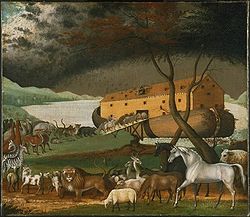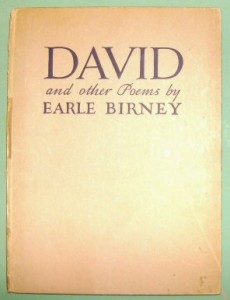As a follow-up to the previous post, for a very Frygian take on Bradbury as a writer of romance, a teller of tales, read Margaret Atwood’s article in The Guardian. Interestingly, she identifies him with the Gothic tradition in American literature, with Poe and Hawthorne, two writers and a tradition central in Frye’s writings on romance.
Atwood plays down Bradbury’s identity as a writer of science fiction and reminds us of his credentials as a writer of tales of horror and weird adventure. She herself has avoided the categorization, preferring the term speculative fiction for her own The Handmaid’s Tale or Oryx and Crake. In spite of his reputation as the master builder of literary pigeon cotes, Frye would have strongly agreed. Science fiction, fantasy fiction, speculative fiction, tales of adventure and wonder, all of these are forms of romance, and have the most congenial and promiscuous relations. As Michael Dolzani writes in his fine introduction to Frye’s Notebooks on Romance,
Frye is not terribly interested in the definition of literary genres or categories, because definitions imply an essentialist view of literture that he does not share. “Romance” is not an essence or exactly deliminted area but a context: that is, a set of expectations for the imagination of either the writer or the reader. Some of the fun and creativity of any literary form comes from the possibility of playing either with or against the expectations of the context; it can be even more creative to play with and against the conventions at the same time. Thus, the title of the second chapter of The Secular Scripture is “The Context of Romance.” (xxii-iii)
As Frye himself put it, the context provided by such definitions is “something like a magnetic field, not a farmer’s field with a fence around it” (Myth and Metaphor 81).
The context of Frye’s own interest in fantasy fiction and science fiction is his life-long study and exploration of romance. Here is a sample from Notes 56a:
When Tolkien first came out a lot of people would say “I can’t read fantasy,” with an air of conscious virtue. But when he became popular it became evident that a tradition was behind him. The basis of this tradition was George MacDonald and William Morris, and while my enthusiasm for Tolkien himself was never white-hot, Morris was the man after Blake who most interested me, just as Spenser was the man before. But gradually it became clear that the whole tradition of what I call sentimental romance, Scott, Wilkie Collins, Sheridan LeFanu, even Rider Haggard, was involved. Now there’s a flourishing industry in reprinting works of “adult fantasy,” of which I’m availing myself. It’s also clear that the whole development of science fiction, and the kind of writing on the periphery of that (e.g. [Kurt] Vonnegut) attaches itself to sentimental romance, not to realism, and makes the tradition of the former important to grasp. (CW 15: 191)
In a note to his discussion of science fiction in his introduction, Dolzani provides a glimpse into the extent of Frye’s reading in this particular area:
The NFL [Northrop Frye Library: the books in Frye’s personal library, now in the Victoria University Library] includes at least one work by the following twentieth-century science fiction and fantasy writers; an asterisk after the name means that one or more volumes by the author is annotated: Richard Adams,* Piers Anthony,* Isaac Asimov,* Margaret Atwood, Alfred Bester, James Blish,* Hannes Bok,* Ray Bradbury,* James Branch Cabell,* Robert W. Chambers,* John Christopher, Arthur C. Clarke,* Mark Clifton,* Samuel R. Delany,* Lord Dunsany,* E.R. Eddison,* H. Rider Haggard,* Robert Heinlein, Frank Herbert,* William Hope Hodgson,* Fred Hoyle,* M.R. James,* R.A. Lafferty,* Ursula LeGuin,* Stanislaw Lem,* C.S. Lewis,* David Lindsay,* Arthur Machen,* Walter M. Miller, Mervyn Peake,* Olaf Stapledon,* J.R.R. Tolkien,* H.G. Wells, T.H. White,* Charles Williams,* Colin Wilson,* John Wyndham,* Roger Zelazny.* He also owned a number of anthologies and books of criticism of science fiction and fantasy, including Alexei and Cory Panshin, The World Beyond the Hill: Science Fiction and the Quest for Transcendence (New Ycrk: Jeremy P. Tarcher, 1989), for which he wrote a publisher’s blurb. (CW 15: 379)
This affinity is most evident in The Secular Scripture, but it is already apparent in Anatomy of Criticism (1957) where Frye defines science fiction in terms of romance:
What we have said about the return of irony to myth in tragic modes thus holds equally well for comic ones. Even popular literature appears to be slowly shifting its center of gravity from murder stories to science fiction or at any rate a rapid growth of science fiction is certainly a fact about contemporary popular literature. Science fiction frequently tries to imagine what life would be like on a plane as far above us as we are above savagery; its setting is often of a kind that appears to us as technologically miraculous. It is thus a mode of romance with a strong inherent tendency to myth.
In the preface to the Italian translation of The Secular Scripture Frye notes that the references in his study of sentimental romance “are mainly to Spenser, Scott, William Morris, and contemporary science fiction.”
Here are some excerpts:
When the novel developed, romance continued along with it in the “Gothic” stories of “Monk” Lewis and his Victorian successors. William Morris is to me the most interesting figure in this tradition for many reasons, one of them being his encyclopedic approach to romance, his ambition to collect every major story in literature and retell or translate it. In the twentieth century romance got a new lease of fashion after the mid-1950s, with the success of Tolkien and the rise of what is generally called science fiction.
No genre stands alone, and in dealing with romance I have to allude to every other aspect of literature as well. Still, the conventions of prose romance show little change over the course of centuries, and conservatism of this kind is the mark of a stable genre. In the Greek romances we find stories of mysterious birth, oracular prophecies about the future contortions of the plot, foster parents, adventures which involve capture by pirates, narrow escapes from death, recognition of the true identity of the hero and his eventual marriage with the heroine. We open, let us say, [Sir Walter Scott’s] Guy Mannering, written fifteen centuries later, and we find that, although there are slight changes in the setting, the kind of story being told, a story of mysterious birth, oracular prophecies, capture by pirates, and the like, is very much the same. In Greek romance the characters are Levantine, the setting is the Mediterranean world, and the normal means of transportation is by shipwreck. In science fiction the characters may be earthlings, the setting the intergalactic spaces, and what gets wrecked in hostile territory a spaceship, but the tactics of the storyteller generally conform to much the same outlines. (CW 18: 6)
If we define popular literature as what ignorant and vicious people read, the prejudice implied will make it impossible to understand what is going on in literature. Similarly, if we define the primitive only as the chronologically early, we create an illusion of literature gradually improving itself from naked savagery to the decent clothing of accepted cultural values. But actually the primitive is a quality in literature which emerges recurrently as an aspect of the popular, and as indicating also that certain conventions have been exhausted. The Greek romancers, for all their coyness, are more primitive in this sense than Homer or Aeschylus; the Gothic romancers, like many of the poets contemporary with them, are primitive in a way that Pope and Swift are not, and so are the folk singers and and science fiction writers of our own day as compared with Eliot or Joyce. (24)
The prevailing conception of serious fiction is enshrined41 in the title of F.R. Leavis’s book The Great Tradition, a study of George Eliot, Henry James, and Joseph Conrad which assumes that these writers are central in a hierarchy of realistic novelists extending roughly from Defoe to D.H. Lawrence. The assumption seems reasonable, yet when empires start building walls around themselves it is a sign that their power is declining, and the very appearance of such a title indicates a coming change of fashion on the part of both writers and readers. As soon as a defensive wall is in place, the movements of the barbarians on the frontiers, in this case the readers of romance, Westerns, murder mysteries, and science fiction, begin to take on greater historical importance. These movements assumed a more definite shape after the appearance of Tolkien’s Lord of the Rings in the mid-1950s. On the T.S. Eliot principle that every writer creates his own tradition, the success of Tolkien’s book helped to show that the tradition behind it, of George MacDonald and Lewis Carroll and William Morris, was, if not “the great” tradition, a tradition nonetheless. It is a tradition which interests me rather more than Tolkien himself ever did, but for a long time I was in a minority in my tastes. Over twenty years ago, in the remotest corner of a secondhand bookshop, I picked up a cheap reprint of William Morris’s The Roots of the Mountains. The bookseller remarked that the two little green volumes had been sitting on his shelves since the day he opened his shop in 1913. Fortunately he had some other stock that moved faster, but if the shop is still there it is probably featuring paperback reprints of William Morris romances in a series which, though still cautiously labelled “adult fantasy,” seems to be finding its public. (30-31)
A study of mirror worlds in romance might range from the Chinese novel best known in the West by the title The Dream of the Red Chamber to some remarkable treatments of the theme in science fiction, such as Arthur Clarke’s The City and the Stars and Stanislaw Lem’s Solaris. (72)
Doubles in time are, of course, much more complicated than doubles in space: the great pioneer work here is Henry James’s unfinished The Sense of the Past, and the doubles produced by some kind of “time machine” have been extensively explored in science fiction. (78)
Technology, for capitalism and still more for Communism, seemed at one time to promise the kind of human ascendancy over nature that would accompany the final recovery of myth, but the poets have dragged their feet in its celebration. Blake, D.H. Lawrence, Morris, Yeats, Pound, are only a few of those who have shown marked hostility to technology and have refused to believe that its peaceful and destructive aspects can be separated. The poets see nothing imaginative in a domination of nature which expresses no love for it, in an activity founded on will, which always overreacts, in a way of life marked by a constant increase in speed, which means also an increase in introversion and the breaking down of genuine personal relationships. The great exception, the literary movement that was expected to seize on technology as its central theme, was assumed to be science fiction. But the way in which science fiction, as it has developed from hardware fantasy into software philosophical romance, has fallen into precisely the conventions of romance as outlined here is so extraordinary that I wish I had the time and the erudition to give it a separate treatment. Visions of utopias, or properly running communities, belong in its general area; but, in modern science fiction, anti-utopias, visions of regression or the nightmarish insect states of imaginative death, must outnumber the positive utopias by at least fifty to one. (118)









